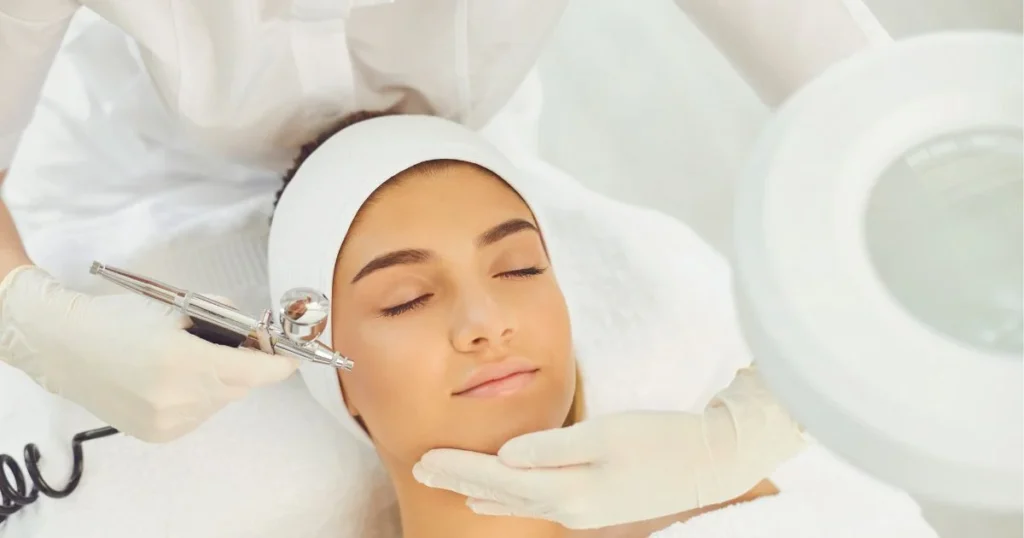How to Treat Chemical Burn on Face from Skincare
Chemical burns on the face can be distressing and require prompt attention to minimize further damage and promote healing. Skincare products containing harsh chemicals or improper usage can lead to these burns, causing redness, swelling, blistering, and pain. Treating a chemical burn on the face involves immediate first aid steps to flush out the chemical, followed by gentle care to promote the skin’s recovery.
This guide will provide essential tips and remedies to effectively treat a chemical burn on the face, ensuring proper care and support to restore the skin’s health and appearance.. In this article, we will explore the best practices for treating chemical burns on the face caused by skincare products.
 Understanding Chemical Burns on the Face
Understanding Chemical Burns on the Face
Before delving into the treatment methods, it’s essential to understand what a chemical burn is. A chemical burn occurs when the skin comes into contact with harmful substances that cause damage to the tissues. Skincare products containing strong chemicals or improper usage can lead to chemical burns on the face. These burns can vary in severity, ranging from mild irritation to more severe damage.
You may also like..How Long Does Sunburn Last 10 Effective Home Remedies Should You Wear Sunscreen Every Day? Get the Best Answer
Immediate Steps to Take
If you’ve accidentally suffered a chemical burn on your face, taking immediate action is crucial to minimize the damage and promote healing. Here are the steps you should follow:
1. Rinsing with Water
As soon as you realize you have a chemical burn, rinse the affected area with cool water. This helps remove any remaining product on the skin and dilutes the chemicals, reducing their potential harm. Gently splash water on your face for several minutes, ensuring that the water flows away from unaffected areas.
2. Applying Cold Compress
After rinsing, apply a cold compress to the affected area. This helps reduce inflammation, soothes the skin, and provides relief from pain or stinging sensations. Wrap a clean cloth or towel around an ice pack or use a bag of frozen vegetables and gently place it on the burned area for 10-15 minutes.
3. Avoiding Home Remedies
While it might be tempting to try various home remedies immediately, it’s crucial to avoid them initially. Applying toothpaste, oils, or other substances not specifically designed for treating burns can worsen the condition or delay the healing process. Stick to basic first-aid steps and consult a healthcare professional for proper guidance.
Seeking Medical Attention
Depending on the severity of the chemical burn, it’s important to seek medical attention. Medical professionals can assess the burn’s extent and provide appropriate treatment options. If you experience intense pain, blistering, extensive redness, or notice signs of infection, such as pus or a foul smell, it’s vital to consult a doctor promptly.
Medications for Pain Relief
In some cases, over-the-counter pain relievers may be recommended to manage pain and discomfort. However, always consult a healthcare professional or pharmacist before taking any medication, especially if you have pre-existing medical conditions or are taking other medications.
Topical Treatments
Your healthcare provider may prescribe or recommend topical treatments to aid in the healing process and alleviate symptoms. These treatments may include:
- Antibiotic ointments to prevent infection
- Steroid creams to reduce inflammation
- Antihistamine creams to relieve itching
- Silver sulfadiazine cream for its antimicrobial properties
It’s important to follow the instructions provided by your healthcare professional and use these topical treatments as directed.
Moisturizing and Soothing the Skin
Keeping the affected skin moisturized is essential for promoting healing and preventing further irritation. Use gentle, fragrance-free moisturizers or emollients recommended by your healthcare provider. Applying aloe vera gel or a cool compress can also provide soothing relief to the burned area.
Protecting the Skin from Sun Exposure
During the healing process, it’s crucial to protect the burned skin from sun exposure. Ultraviolet (UV) rays can cause further damage and delay the healing process. Apply a broad-spectrum sunscreen with at least SPF 30 or higher to shield the affected area from the sun’s harmful rays.
Avoiding Irritants and Harsh Products
While your skin is healing, it’s important to avoid using harsh products or irritants that can exacerbate the condition. Steer clear of skincare products containing alcohol, fragrances, and other potential irritants. Opt for gentle, hypoallergenic products suitable for sensitive skin.
The Healing Process
Chemical burns on the face may take time to heal, and the duration can vary depending on the severity of the burn. It’s essential to have patience and follow the prescribed treatment regimen consistently. Here are some tips to aid in the healing process:
1. Promoting Skin Healing
Eat a balanced diet rich in vitamins and minerals to support the healing process. Nutrients like vitamin C, vitamin E, and zinc play a vital role in wound healing. Stay hydrated by drinking an adequate amount of water each day.
2. Patience and Consistency
Allow your skin the time it needs to heal. Avoid picking at scabs or peeling skin, as this can lead to infection or scarring. Follow the instructions provided by your healthcare professional diligently and be consistent with your skincare routine.
Conclusion
Experiencing a chemical burn on your face from skincare products can be distressing, but with the right approach, you can effectively treat and heal the affected area. Remember to take immediate action by rinsing the area, applying a cold compress, and seeking medical attention if necessary. Follow the prescribed treatments, keep the skin moisturized, protect it from the sun, and avoid harsh products. Patience, consistency, and proper care are key to a successful recovery.
Disclaimer: The information provided in this guide is for general informational purposes only and should not be considered as a substitute for professional medical advice or treatment. Always consult a healthcare professional or dermatologist for specific guidance tailored to your individual circumstances.
FAQs
How long does it take for a chemical burn on the face to heal?
The healing time for a chemical burn on the face can vary depending on the severity of the burn. Mild burns may heal within a week or two, while more severe burns may take several weeks or even months to heal completely.
Can I use home remedies to treat a chemical burn on my face?
It's generally best to avoid using home remedies initially. While some remedies may provide temporary relief, they can also worsen the condition or delay the healing process. Stick to basic first-aid steps and consult a healthcare professional for appropriate treatment.
How can I prevent chemical burns from occurring during my skincare routine?
To prevent chemical burns, it's important to read and follow the instructions on skincare products carefully. Perform a patch test before using a new product, especially if you have sensitive skin. Avoid mixing or layering multiple products containing strong chemicals.
Should I pop blisters that form after a chemical burn on my face?
It's best to avoid popping blisters that form after a chemical burn. Blisters act as a protective barrier for the healing skin underneath. Popping them can increase the risk of infection and slow down the healing process. If a blister pops on its own, clean the area gently with mild soap and water, apply an antibiotic ointment, and cover it with a sterile bandage.
When should I seek medical attention for a chemical burn on my face?
You should seek medical attention for a chemical burn on your face if you experience intense pain, extensive redness, blistering, signs of infection (such as pus or a foul smell), or if the burn covers a large area. A healthcare professional can assess the severity of the burn and provide appropriate treatment guidance.


 Understanding Chemical Burns on the Face
Understanding Chemical Burns on the Face

